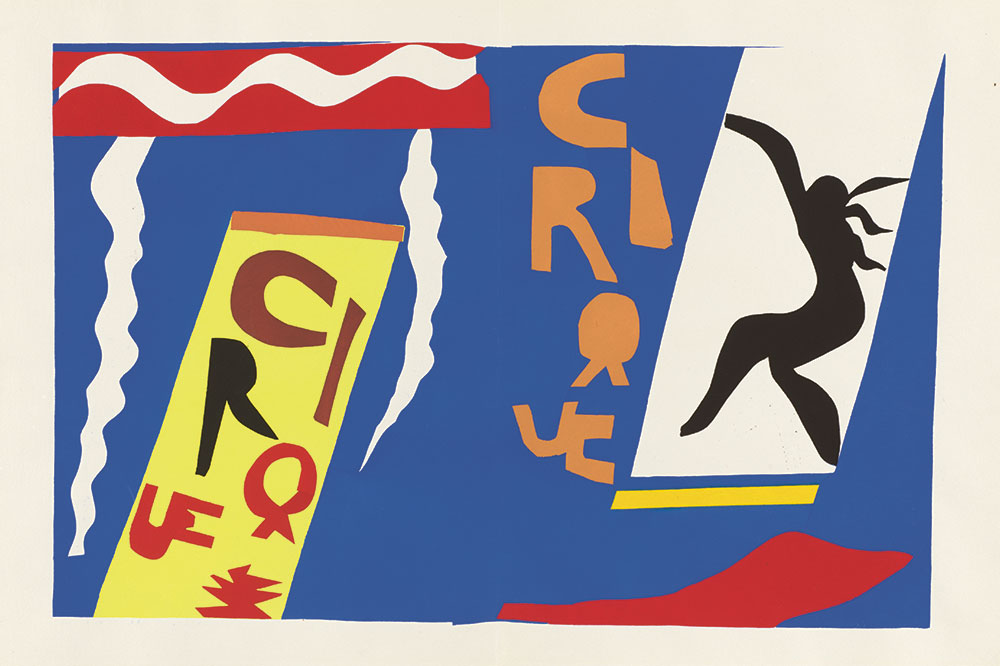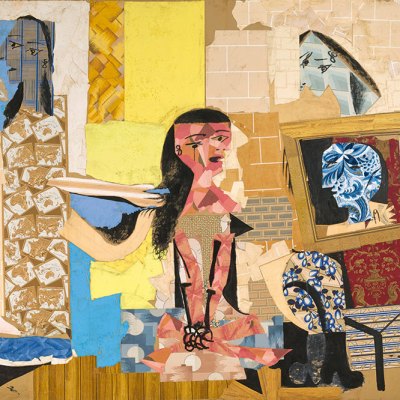‘Everything in the world exists to end up as a book,’ wrote the poet Stéphane Mallarmé, encapsulating his vision of an ideal tome to end all tomes. Perhaps nowhere has this rapt fetishisation of the printed volume been more persistent than in France, a country that still boasts, even in this age of discounted literacy, a vibrant book culture and, even in this age of Amazon, a tenacious bookstore economy. As Louise Rogers Lalaurie explains in her study of Henri Matisse’s artist books, it was the same Mallarmé who in the 1870s launched the tradition of the French livre d’artiste, when he and Édouard Manet collaborated on illustrated editions of his translation of Edgar Allan Poe’s ‘The Raven’ and his own ‘L’après-midi d’un faune’ (decades before Debussy or Nijinsky got hold of it).
Savvy art dealers picked up on the commercial potential of these hybrid publications, and in the early 1900s the gallerist Ambroise Vollard – soon emulated by younger colleagues such as Daniel-Henry Kahnweiler, Albert Skira, and Tériade – began publishing deluxe volumes that were distinguished from standard illustrated books by their limited quantity, fine paper, large format and, often, inclusion of original prints. ‘Born out of the French Belle Époque,’ writes Lalaurie, ‘the books celebrate high aestheticism and an inclusive embrace of the fine, decorative and applied arts.’
Matisse entered the field in the early 1930s, when he was in his seventh decade and already famous, partly out of competitiveness with fellow artists who had books of their own and partly out of disillusionment with painting. His first project, commissioned by Skira as a sequel to the publisher’s successful Ovid/Picasso Metamorphoses, was, appropriately enough, an illustrated edition of selected poems by Mallarmé. Lalaurie points out that this book and those that followed contain some of Matisse’s best-known graphic works; they are also among his most engaging productions in any medium. Ranging from fine-lined etchings to heavily shaded chalk drawings and sinuous linocuts, they manifest an expressiveness and freedom he could no longer find on canvas. As he reported to Pierre Bonnard, ‘I have found a way of drawing which […] has the spontaneity that allows me to unload completely what I feel.’
One of the more interesting aspects of Matisse: The Books is its off-label use as a mini-biography of the artist’s wartime years. Of the volumes profiled here, most were undertaken, if not necessarily published, under the Occupation, and bear traces of the artist grappling with ill health and old age, concern over his family (both his wife and his daughter were arrested by the Gestapo), disdain for the Vichy-enforced classicism of the Académie Française, and concern about his posterity. Lalaurie nicely draws out the contradictions of a man both cultivating his fame and retreating from it, simultaneously politically committed and profoundly opportunistic – as evidenced by his collaborations with both the Communist writer Louis Aragon, who would become one of Matisse’s most committed champions, and the Vichyite novelist Henry de Montherlant, whose Pasiphaé he illustrated (to his subsequent regret) shortly before D-Day.
Frontispiece by Henri Matisse in Pasiphaé: Chant de Minos (Les Crétois) (1944), Henry Montherlant. Photo: © Toledo Museum of Art; © Succession H. Matisse/DACS 2020

In this regard, Matisse’s second outing, Dessins, Thèmes et Variations (1943), seems to encompass all the ambiguities contained in these books. It is a magisterial work: 158 single-sheet drawings reproduced from pencil, ink, crayon, or charcoal originals. Almost exclusively portraits of models or still lifes, they exude a sensuality that far outstrips their linear simplicity (even lemons on a tabletop are sexy, paired and pointed and unmistakably erotic); Matisse considered the work ‘one of the greatest efforts of [his] life’. But Lalaurie also notes how the primary subject matter – ‘languorous models in evening gowns […] quite literally sitting out the war’ – is ‘strikingly at odds’ with the book’s historical context. And its lengthy preface by Aragon, who was then in hiding for his Resistance activities, is counterbalanced by the imprint of Martin Fabiani, whose contacts in the Gestapo helped his publishing house prosper during that period. (If Fabiani’s willingness to publish the Communist Aragon seems ambivalent, so too do the actions of Matisse, who leaned on Fabiani’s influence to create two books with him, then distanced himself soon after the Liberation.)
‘L’avaleur de sabres’ from Jazz (1947), Henri Matisse. Photo: © Philadelphia Museum of Art; © Succession H. Matisse/DACS 2020

Matisse: The Books offers detailed histories and context on each of the eight major artist books he produced, from the Mallarmé poems to his last and perhaps best known volume, Jazz (1947), for which he adopted the strident paper cut-outs that occupied his final years (he died in 1954) and that, as Lalaurie suggests, were better suited to ‘the hopes and aftershocks’ of the post-war period. As befits the topic, the book is elegantly designed and produced, its format commensurate with that of the volumes it describes. Lalaurie walks the reader through each publication, practically page by page and image by image, which, while it can give the narrative a slightly repetitive feel, also yields a number of provocative insights – including some tart observations on the predatory dynamic between Matisse and his models, and on what he ‘would almost certainly not have described as the heterosexual male gaze’.
In books, as in any artistic medium, nothing can replace experiencing the real thing. But this extensive study, with its many reproductions and engaging commentary, offers a worthwhile late-period portrait of an artist who, as Aragon wrote in one of his many encomia, ‘used books to tell the story of his life’ and ‘renew[ed] the very concept of illustration’.
Matisse: The Books by Louise Rogers Lalaurie is published by Thames & Hudson.
From the November 2020 issue of Apollo. Preview and subscribe here.



